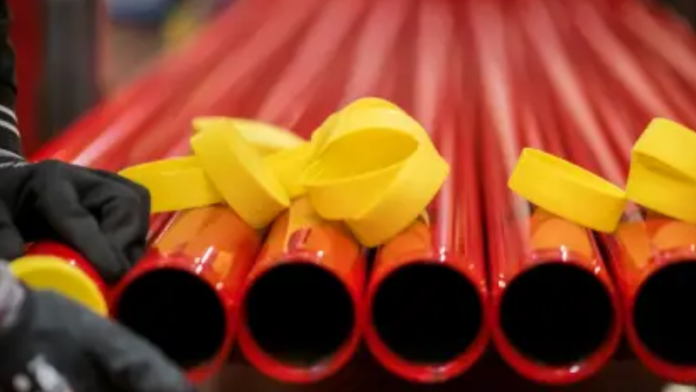The thickness of Schedule 40 is not entirely set in stone by guidelines set by associations like ASTM and ASME, where the schedule number implies the ostensible wall thickness. Factors like the material piece and temperature conditions impact this thickness. In modern applications, the thickness of the Schedule 40 pipe assumes a significant part in guaranteeing primary trustworthiness.
Understanding the several aspects of how thick is schedule 40 pipe, is considered important for architects and assignment bosses to pick the fitting pipe for various applications, going from plumbing and cooling systems to intensified dealing with plants and petrol therapy offices, guaranteeing ideal execution and life span.
Determining the Thickness of Schedule 40 Pipe
Schedule 40 pipe is a standard for estimating pipes considering their thickness and is by and large used in various endeavours. In order to guarantee structural integrity and suitability for various applications, it is essential to comprehend what determines its thickness.
Industry Guidelines and Guidelines
The thickness of Schedule 40 is not entirely set in stone by industry norms and guidelines set by associations like the American Culture for Testing and Materials (ASTM) and the American Culture of Mechanical Specialists (ASME). These guidelines lay out the ostensible wall thickness for various pipe sizes to guarantee consistency and consistency in assembling.
Size of a Nominal Pipe
Schedule 40 pipe thickness is not entirely set in stone by the NPS. NPS implies the size of the pipe considering its inside broadness, which isn’t exactly identical to its outside estimation. For the schedule 40 pipe, the ostensible sizes commonly range from 1/8 inch to 24 inches.
Schedule Number
The schedule number is one more basic element that decides the thickness of the schedule 40 pipe. A dimensionless number is used to denote the schedule number, which indicates the nominal wall thickness of the pipe. The schedule number for the Schedule 40 pipe is the same regardless of the pipe’s size.
Material Piece
The material arrangement of the pipe additionally impacts its thickness. Schedule 40 pipes can be produced using different materials like steel, PVC, CPVC, and tempered steel, each with its own arrangement of properties and thickness necessities. For example, steel pipes might have thicker walls contrasted with PVC pipes to endure higher tensions and temperatures.
Impact of Thickness of Schedule 40 Pipe on Industrial Applications
The thickness of the Schedule 40 pipe fundamentally influences its exhibition and reasonableness for different modern applications. Understanding what thickness means for various businesses is essential for choosing the suitable pipe for explicit activities.
Underlying Honesty and Sturdiness
Industries like construction, oil and gas, and substance handling intensely depend on schedule 40 pipes with thicker walls to endure high-pressure liquids, cruel circumstances, and weighty burdens. These organizations require powerful funnelling answers for guarantee functional security, dependability, and productivity all through their activities.
Pressure Taking Care of Ability
The thickness of the Schedule 40 pipe straightforwardly impacts its tension taking care of ability. Thicker walls can endure higher inner tensions without twisting or cracking, making them reasonable for applications including compressed liquids or gases. Businesses like assembling, power age, and petrochemicals require a schedule 40 pipe with sufficient thickness to keep up with functional security and productivity.
Temperature Obstruction
Schedule 40 pipe has walls that are thicker, making it more resistant to temperature changes and thermal stresses. Enterprises like Central Air, auto, and aviation use scheduled 40 pipes with thicker walls to ship hot or cold liquids and gases without compromising execution or dependability.
Resistance to Corrosion
Thicker walls give extra assurance against erosion, broadening the help life of the Schedule 40 pipe in destructive conditions. Businesses like marine, compound handling, and wastewater therapy benefit from schedule 40 pipes with thicker walls, lessening the gamble of breaks, disappointments, and support costs related to erosion harm.
Sum Up
The thickness of schedule 40 is not entirely settled by a blend of industry norms, ostensible pipe size, schedule number, material piece, and expected working circumstances. Understanding these elements is fundamental for choosing the right pipe for modern applications and guaranteeing ideal execution, security, and life span in channelling frameworks.
















